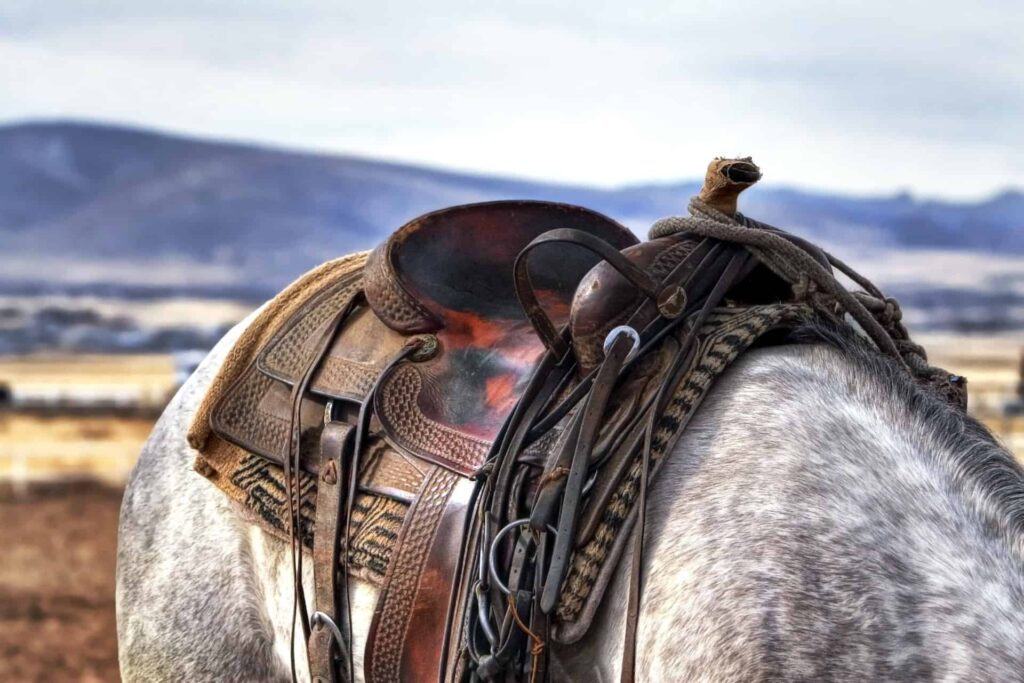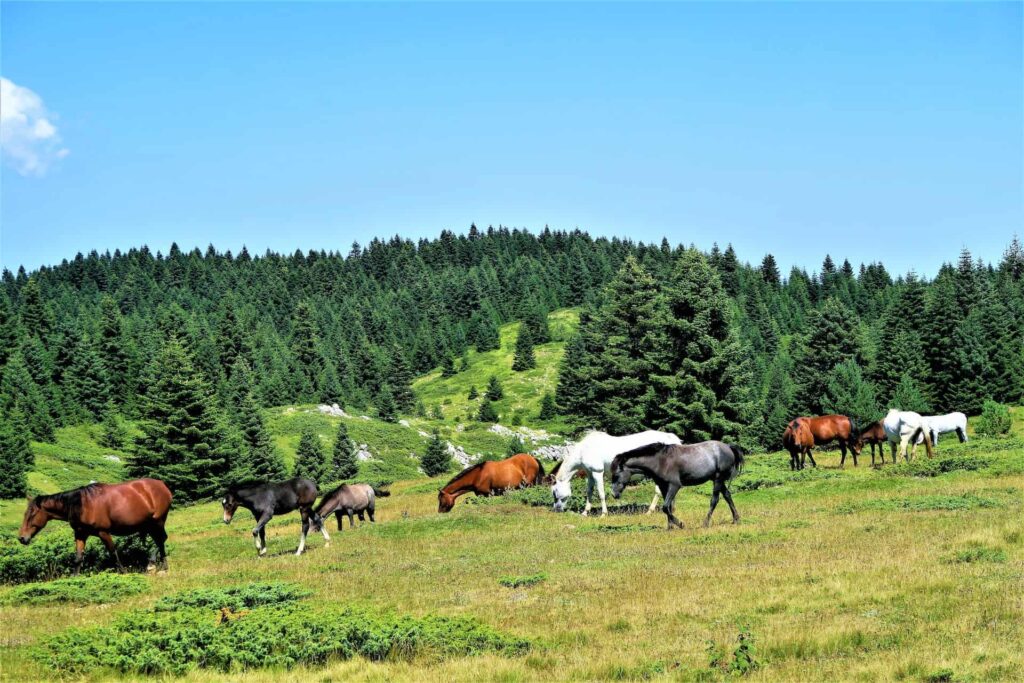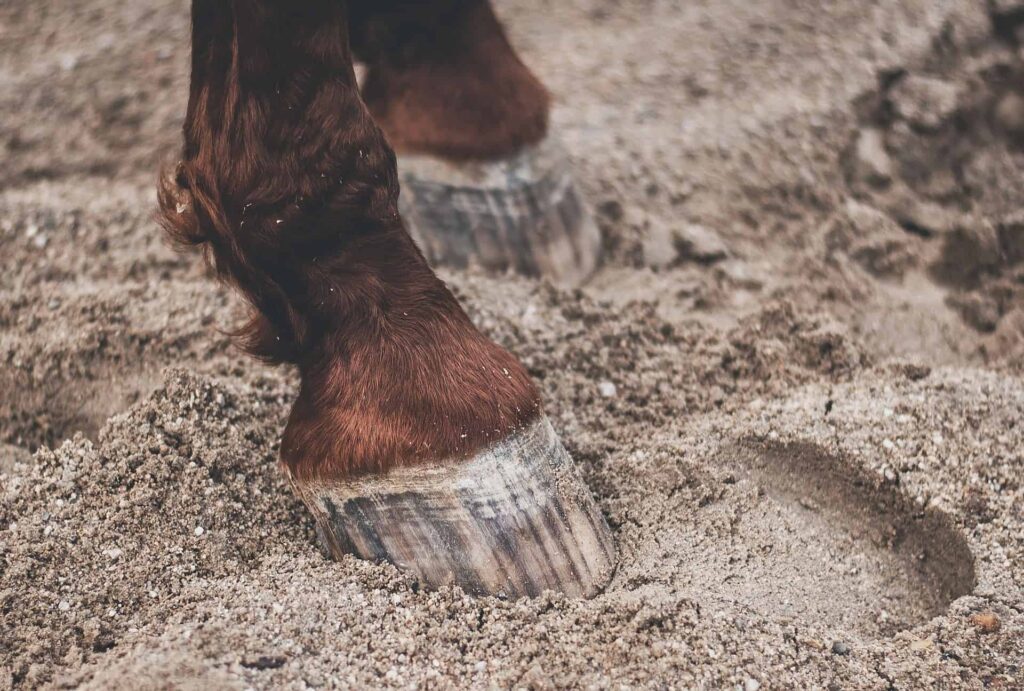Horseback riding is a popular pastime and sport enjoyed by many people around the world. It’s essential to properly saddle a horse before riding as it promotes safety and comfort for both horse and rider. For those new to equine activities, learning the correct process can be a bit intimidating. However, by understanding the steps involved, and with practice, one can quickly become proficient at saddling a horse.
Before saddling a horse, it’s essential to identify the right saddle, inspect the horse for any discomfort, and make the necessary preparations. Positioning the saddle correctly and securing it ensures the horse’s comfort and the rider’s safety during use. Along the way, it’s crucial to be aware of common mistakes that may hamper the saddling process and take additional precautions to optimize success.
Key Takeaways
- Choose the appropriate saddle and inspect the horse for any issues before saddling.
- Properly position and secure the saddle to ensure comfort and safety for both horse and rider.
- Be aware of common mistakes and safety precautions to improve the overall saddling experience.
Identifying the Right Saddle
A crucial step in saddling a horse is selecting the right saddle. There are various types of saddles available, and each is designed for specific disciplines, horse breeds, and riding styles. When identifying the right saddle, you must consider the horse’s conformation and your own riding style.
To choose a suitable saddle for your horse, ensure proper wither clearance by checking the space between the saddle’s underside and the top of the withers. A three-finger distance is recommended for a comfortable fit. This helps in preventing discomfort, chafing, or injury to the horse.
Pay close attention to the saddle’s balance when it’s placed on the horse. It should lie level when it’s cinched up, avoiding any rocking or bridging. A well-balanced saddle enables both the rider and the horse to perform at their best and enhances overall comfort during the ride.
You should also consider the quality and construction of the saddle. High-quality saddles are made with durable materials and attention to detail such as stitching, padding, and tree fit. Opting for a reliable saddle ensures a better riding experience and lasts for an extended period.
In summary, identifying the right saddle for your horse involves taking into account the horse’s anatomy, saddle fit, balance, and quality. Selecting a suitable saddle contributes to a comfortable and safe riding experience for both the rider and the horse.
Inspecting the Horse
Before saddling a horse, it is important to thoroughly inspect the horse to ensure that it is comfortable and in good health. Start by observing the horse’s overall behavior and body language. A calm, relaxed horse with a level head is a good sign that it is ready to be saddled.
The next step is to check the horse’s coat and skin for any sore spots, cuts, or abrasions. Run your hands through the horse’s coat, feeling for any lumps, bumps, or heat that may cause discomfort when the saddle is placed on the horse’s back. Make sure to carefully inspect the withers and spine, where the saddle will sit, and ensure that the hair is lying flat in the direction of growth. If issues are found, it is best to address them before proceeding with saddling the horse.
Additionally, take the time to properly groom the horse, using a curry comb to remove any loose hair and dirt from its body. This will help to prevent irritation under the saddle and make the horse more comfortable during the ride. After grooming, use a soft brush to smooth the coat, focusing on the areas where the saddle and girth will be placed.
Finally, check the horse’s hooves for any debris or signs of sensitivity. Pick out each hoof, remove any dirt or rocks, and ensure that there is no heat or swelling in the coronary band, which could indicate an issue that needs attention.
Following these steps to thoroughly inspect the horse will set the foundation for a successful and comfortable riding experience.
Preparing for Saddling
Grooming the Horse
Before saddling your horse, it’s essential to properly groom it. Grooming ensures that your horse is comfortable and free from dirt or debris that could cause discomfort beneath the saddle. Start by using a curry comb to loosen any dirt. This comb helps to lift trapped dirt and debris from the horse’s coat. Next, use a hard brush to sweep away the loosened dirt. Make sure to pay attention to the area where the saddle will be placed since this is where most of the pressure will be during riding.
Checking Saddle Condition
After grooming the horse, it’s crucial to inspect the saddle for any damage or wear that could affect the horse’s comfort and safety. Check the saddle pad or blanket to ensure it is clean and free of tears or holes. Examine the saddle’s leather for cracks, excessive wear, or loose stitching. Make sure the cinches and straps are in good condition and not frayed or damaged.
Once you have confirmed that both the horse and saddle are clean and in good condition, you’re ready to proceed with saddling the horse. This preparation ensures a comfortable and safe experience for both you and your horse during the ride.
Positioning the Saddle
When saddling a horse, it is essential to ensure the saddle’s placement is accurate and comfortable for both you and your horse. Begin by locating the back edge of your horse’s shoulder blade (scapula), gently feeling for it with your fingertips while the horse is standing still 1. The muscle-covered edge of this bone drops off toward the rear, and you should be able to find it by curling your fingers over it.
After determining the position of the shoulder blade, measure back 2 inches and mark that area on both sides of your horse using a piece of tape or chalk2. This will serve as a guide for where the saddle should be placed. Next, place a saddle pad or blanket on the horse’s back, positioning it forward over the withers and sliding it back into place3. This process ensures that the horse’s back hair lies flat beneath the pad and saddle. Double-check that the blanket or pad is even on both sides.
Once the saddle pad or blanket is set, place the saddle on top of it, aligning it with the marks made previously. Adjust the saddle so that it sits comfortably behind the shoulder blade and rests evenly on both sides of the horse4. This position will ensure that the saddle fits properly while avoiding high pressures on your horse’s back.
In summary, correct saddle placement is crucial to providing comfort and safety for both the horse and rider. By locating the shoulder blade, marking its position, and setting the saddle pad or blanket accordingly, you can ensure that your horse will be happy and well-equipped for a pleasant ride.
Footnotes
Securing the Saddle
Fastening the Girth
When saddling a horse, it is essential to fasten the girth securely. To begin, position the saddle pad or blanket on the horse’s back, placing it forward over the withers and sliding it back into place to ensure the hair on the horse’s back lies flat under the pad and saddle 1. The girth should always be fastened on the horse’s left side and you should begin by attaching it to the billets on that side2. Stand on the left side of your horse, reach under the horse’s belly, and gently pull the girth or cinch strap. Be sure to gently tighten the girth, making sure not to over-tighten as this can cause discomfort for the horse3. After fastening the girth, double-check that it is evenly secured and centered on the horse’s belly4.
Adjusting the Stirrups
Proper adjustment of the stirrups is important for the rider’s safety and comfort during the ride5. While standing next to the horse on the left side, lower the stirrup on the right side of the saddle and then adjust the stirrup bar on the left side6.
A general rule of thumb to determine the correct stirrup length is to place the arm along the rider’s leg and let the hand hang down. The fingertip should touch the bottom of the stirrup7. This ensures the rider’s legs are long enough to provide stability, but not so long that they cannot effectively use their heels for cues8.
It is crucial to regularly check the stirrups for wear and tear, as worn-out stirrups may break during a ride, potentially causing an accident9. Replace worn stirrups as needed to maintain a safe and enjoyable riding experience10.
Footnotes
-
https://www.thesprucepets.com/how-to-saddle-a-horse-1886278 ↩
-
https://www.thesprucepets.com/how-to-saddle-a-horse-1886278 ↩
-
https://www.farmhousetack.com/blogs/barn-blog/how-to-correctly-saddle-a-horse ↩
-
https://horseandrider.com/blog/3-tips-secure-in-the-saddle/ ↩
-
https://horseandrider.com/blog/3-tips-secure-in-the-saddle/ ↩
-
https://www.farmhousetack.com/blogs/barn-blog/how-to-correctly-saddle-a-horse ↩
-
https://www.thesprucepets.com/how-to-saddle-a-horse-1886278 ↩
Final Checks and Safety Precautions
Before setting off on a ride, it is important to perform final checks and follow safety precautions to ensure a comfortable and secure experience for both the rider and the horse.
Firstly, ensure that the saddle pad or blanket is placed correctly, just behind the horse’s shoulder blades and partially covering the withers. This ensures proper weight distribution and reduces the risk of friction sores. Make sure the saddle is situated properly, and wiggle it back and forth to check for any areas of discomfort.
Next, double-check the girth or cinch straps on both sides of the saddle. They should be snug but not overly tight, as this can cause discomfort and restrict the horse’s breathing. Try to slip a few fingers in between the girth and the horse’s belly to test for tightness.
When approaching the horse, always speak to them to alert them of your presence, and approach from the side to avoid their blind spots. Touch the horse on the neck or shoulder first, with a firm but gentle stroking motion. This establishes trust and helps the horse feel more comfortable throughout the saddling process.
Additionally, riders should always wear proper safety gear while riding. This includes an ASTM/SEI-certified riding helmet, suitable riding boots with a small heel to prevent slipping through the stirrups, and riding gloves for better grip on the reins.
Finally, inspect the bridle and reins for any signs of wear, damage, or loose parts. It is essential that these components function properly while riding, as they play a crucial role in controlling and communicating with the horse.
Taking the time to follow these safety precautions not only guarantees the well-being of the rider and the horse but also contributes to a more enjoyable and stress-free equestrian experience.
Understanding Common Mistakes
When saddling a horse, it is crucial to recognize and rectify any common mistakes to ensure both rider and horse safety. One prevalent error is the incorrect placement of the saddle pad or blanket. The saddle pad should be positioned evenly on the horse’s back, sliding it forward over the withers and then moving it back into place. This placement ensures that the hair lies flat beneath the pad and saddle, providing optimal comfort and stability for the horse source.
Another common mistake is improper cinching. When securing the front and back cinches, make sure they are adjusted according to the horse’s size and girth. An overly tight cinch might cause discomfort and potential injury to the horse, while a loose cinch might lead to an unstable saddle, increasing the risk of rider injury. Remember, when saddling a green or inexperienced horse, be patient and gentle with the cinching process source.
Neglecting safety checks is another issue that can lead to problems during riding sessions. Before mounting your horse, double-check that the saddle pad, girth, and all straps are secured and positioned correctly. This essential step can help prevent accidents and allow you and your horse to enjoy a pleasant ride source.
To avoid these common mistakes when saddling your horse, remember to:
- Place the saddle pad or blanket properly
- Adjust the cinches to the correct tightness
- Perform safety checks on all straps and the saddle pad
By paying attention to these aspects, you will be better equipped to ensure a safe and enjoyable experience for both you and your horse.
Additional Tips and Tricks
When saddling a horse, it is crucial to ensure their comfort and safety as well as yours. Here are some tips and tricks to make the process smoother and more efficient.
It can be helpful to ask your horse to step their near front leg forward, as mentioned on CavvySavvy. This trick can make more room for the horse’s elbow and skin, making it easier to tighten the cinch and ultimately creating a more comfortable fit for the horse.
Before placing the saddle on the horse, make sure to properly position the saddle pad or blanket. The Spruce Pets advises placing the pad forward over the withers and sliding it back into place, ensuring that the hair on the horse’s back lies flat beneath the pad and saddle. Confirm that the blanket or pad is even on both sides to prevent discomfort for the horse.
Choosing a saddle pad made of natural materials can be beneficial, as mentioned by Deep Hollow Ranch. These materials can absorb sweat and dust while allowing air to flow between the horse’s skin and the saddle. In addition, they can also help improve your riding technique and posture.
Remember that most horses are trained to expect a rider on their left side. Thus, it is good practice to approach your horse from the left when preparing to saddle them. This can help create a sense of familiarity and make the process less stressful for both you and your horse.
Frequently Asked Questions
What is the difference between saddling a Western and an English horse?
Saddling a Western horse involves using a heavier and more structured saddle compared to an English saddle, which is lighter and flatter. Western saddles include a pommel and cantle, while English saddles prioritize closer contact between the rider and the horse. Additionally, Western saddles have a horn on the front for holding ropes or other equipment.
How do you properly place a saddle pad?
To properly place a saddle pad, position it forward over the horse’s withers and slide it back into place, ensuring the hair on the horse’s back lies flat beneath the pad. Make sure the pad is even on both sides and that it is not folded or creased.
What are the main parts of a horse saddle?
The main parts of a horse saddle include the tree, which provides structure and support; the seat, where the rider sits; the pommel, which is the raised front part; the cantle, the raised back part; stirrups for the rider’s feet; and the girth or cinch, used to secure the saddle on the horse.
How do you secure a saddle cinch?
To secure a saddle cinch, stand on the left side of the horse, reach under the horse to grab the cinch or girth, and then buckle or tie it to the saddle on the horse’s left side. Make sure the girth is snug, but not too tight, to avoid discomfort. Double-check that the cinch is even and the horse’s skin is not pinched.
What are some key tips for beginners in horse tack?
Some key tips for beginners in horse tack include choosing the right size saddle and bridle for the horse, learning how to properly saddle and bridle the horse, regularly checking tack for wear and tear, and cleaning and maintaining the tack to ensure longevity.
How do you safely bridle a horse?
To safely bridle a horse, stand on its left side, holding the bridle in your right hand. Slip the bit into the horse’s mouth and gently guide it over its ears. Next, secure the throatlatch and the noseband, ensuring they are snug but not too tight. Finally, adjust the cheekpieces and the bit so they comfortably fit the horse’s head.
Last Updated on September 28, 2023 by Nate Dewsbury



